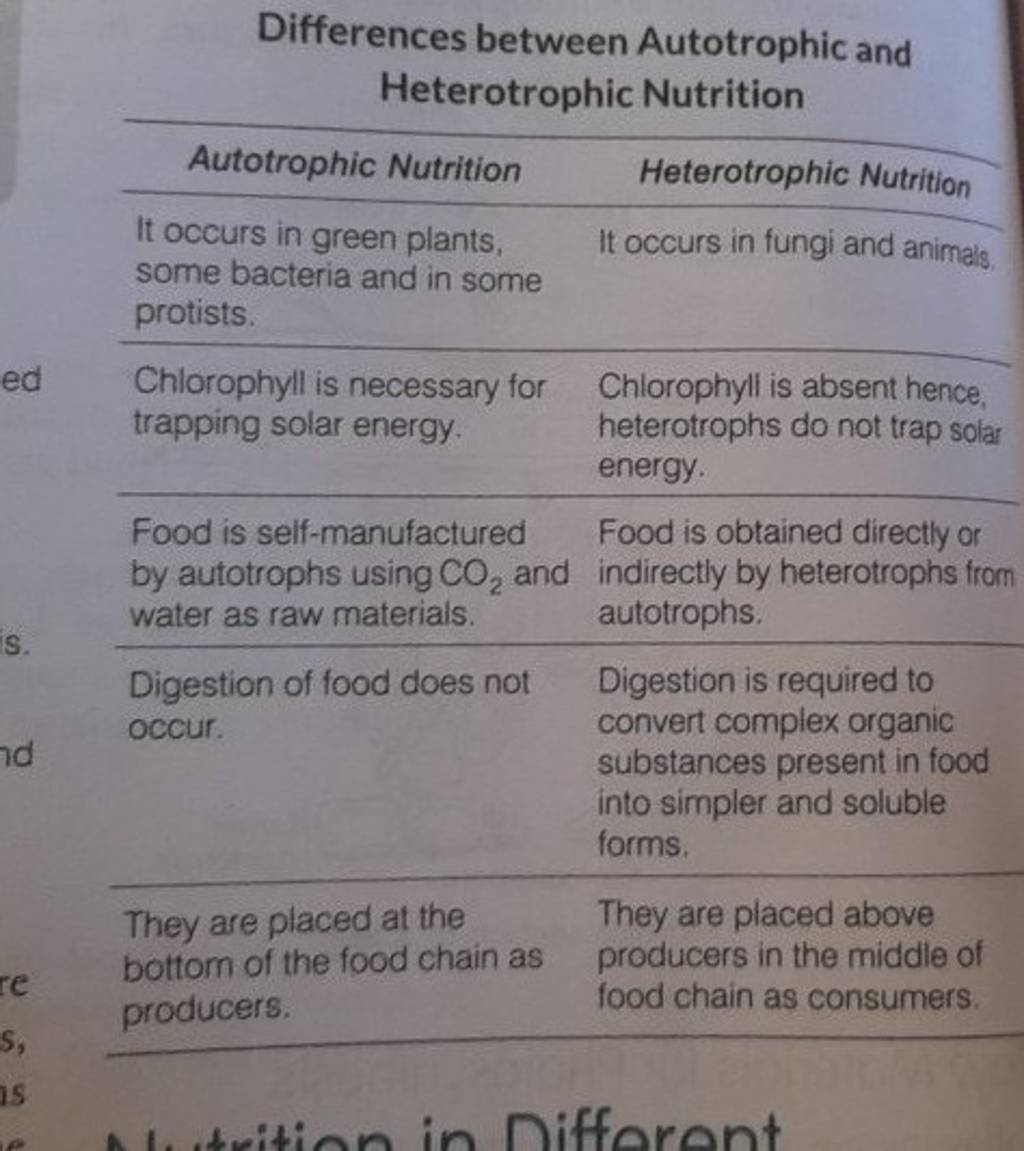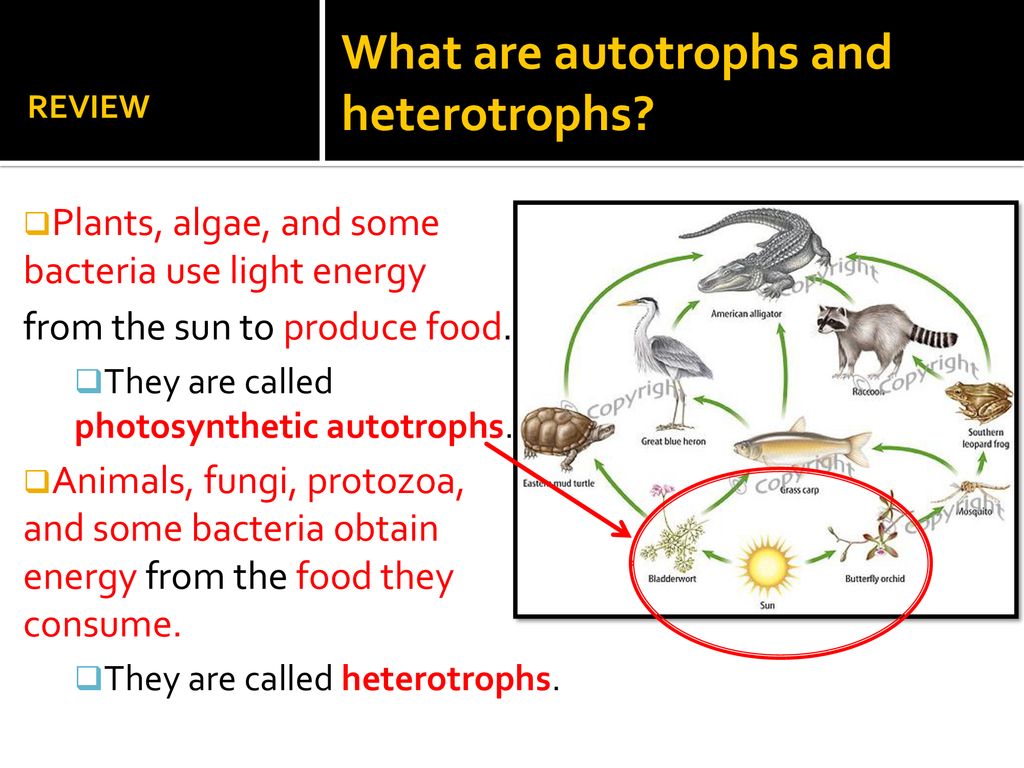Autotrophs and Heterotrophs Biology Diagrams Autotrophs are independent in terms of energy, using sunlight or inorganic chemicals, while heterotrophs depend on autotrophs or other organisms for sustenance. Role in the Food Chain: Autotrophs form the base of food webs as primary producers, whereas heterotrophs occupy higher levels as consumers. Metabolic Processes:

Get food by eating autotrophs or heterotrophs: Primary level of a food chain: Secondary and tertiary levels of a food chain: Plants, algae, some bacteria, archaea: Animals, fungi, some protists, some bacteria: Autotrophs. An autotroph is an organism that makes complex organic compounds from simple carbon compounds, such as carbon dioxide. The Intricate Dance of Life: Understanding the Relationship Between Autotrophs and Heterotrophs in the Food Chain. by Jason Brown. The cycle of life, interwoven through ecosystems, presents a fascinating array of relationships, interactions, and dependencies—all of which culminate in the critical concepts of autotrophs and heterotrophs Key Differences Between Autotrophs and Heterotrophs. Source of Energy: Autotrophs: Derive energy from non-organic sources, primarily sunlight or chemical reactions. Heterotrophs: Obtain energy from organic sources, consuming other organisms or organic matter. Role in Food Chains: Autotrophs: Serve as producers; they are the first trophic level

Food Chain: How Energy Flows From Autotrophs To Heterotrophs? Biology Diagrams
Autotrophs produce their own food by either photosynthesis or chemosynthesis. Autotrophs are at the primary level of food chains. Hence, both syntheses are known as primary synthesis. On the other hand, heterotrophs consume autotrophs or heterotrophs as their food. Thus, heterotrophs are at the secondary or tertiary levels of the food chains.

Autotrophs are independent and can produce their own food. Heterotrophs are directly or indirectly dependent on autotrophs. Trophic level: Autotrophs form the lowest trophic level in the food chain. Heterotrophs form the second or third trophic levels in the food chain. Solar energy: Solar energy can be stored in some autotrophs. Autotrophs: Heterotrophs "Self-feeders" - produce their own food "Other eaters" - do not produce their own food: Make food from inorganic materials: Get food by eating other organisms: Producers: Consumers: At the primary level in a food chain: At the secondary and tertiary levels in a food chain: Are either photoautotrophs or

The Intricate Dance of Life: Understanding the Relationship Between ... Biology Diagrams
The producers, as autotrophs are also known, begin food chains which feed all life. Food chains will be discussed in the "Food Chains and Food Webs" concept. Heterotrophs cannot make their own food, so they must eat or absorb it. For this reason, heterotrophs are also known as consumers. Consumers include all animals and fungi and many protists
